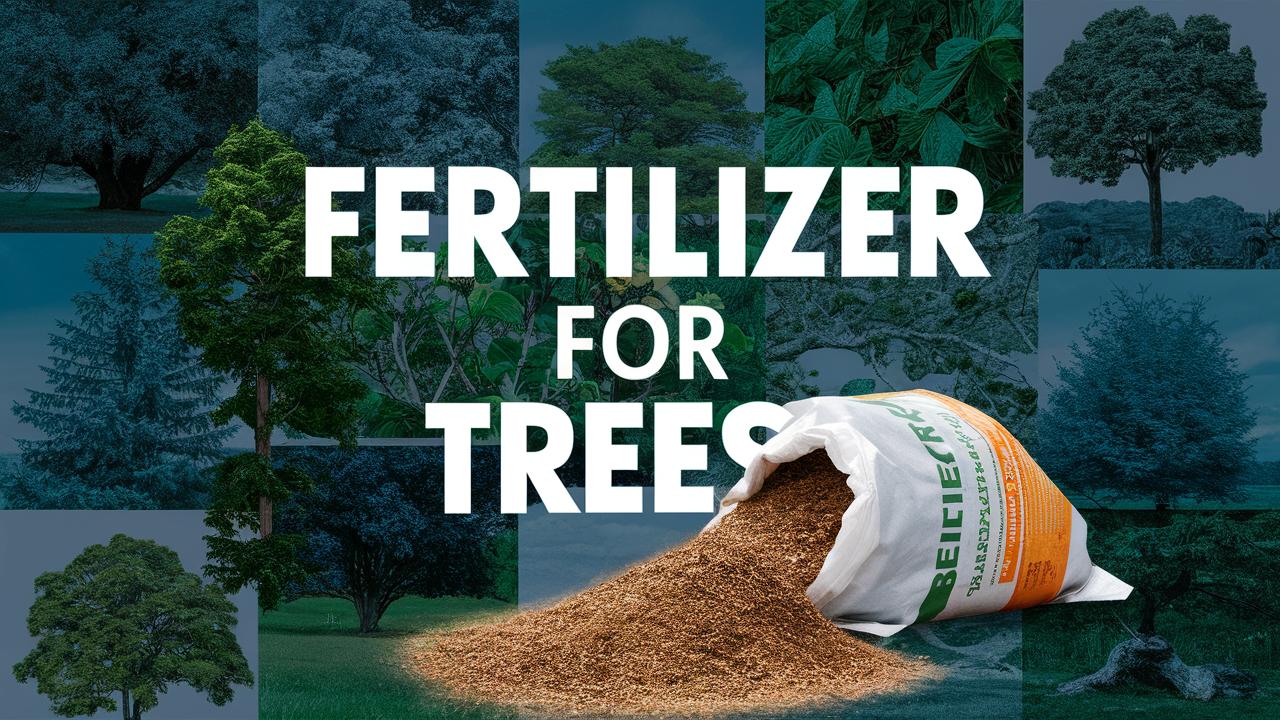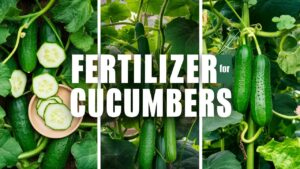This guide aims to educate you on how to select the best fertilizer tailored to your trees’ unique needs
Fertilizer For Trees
| Image | Name | Rating | Shop |
|---|---|---|---|
 | BioAdvanced Tree & Shrub Protect & Feed |  | |
 | Power Strike Palm Tree Fertilizer |  | |
 | Bloom City Tree Fertilizer |  |
BioAdvanced Tree & Shrub Protect & Feed
This BioAdvanced product is a solid choice for anyone looking to fertilize and protect their trees and shrubs. Its 12-month protection against insects like Japanese Beetles and Emerald Ash Borers makes it an attractive option for gardeners who want long-term peace of mind.
The slow-release fertilizer feeds your plants throughout the year, promoting healthy growth from roots to leaves. And with its systemic protection, you don’t have to worry about reapplying it – just one application is enough for up to 12 months. The no-spray granules are also easy to apply, making this product a convenient addition to your gardening routine.
Power Strike Palm Tree Fertilizer
This fertilizer, Power Strike Palm Tree Fertilizer, is a solid choice when looking to nourish your palm trees. With its 13-0-12 NPK formula and bonus micronutrients, it ensures that your indoor or outdoor palms receive the essential nutrients they need. Its simple application process makes it easy to use, and the inclusion of iron promotes stronger root development.
The Power Strike Palm Tree Fertilizer is a versatile product suitable for palm trees of all sizes, addressing common concerns like weak roots and yellowing fronds. With its year-round application and user-friendly design, this fertilizer is perfect for gardeners with varying levels of experience. If you’re looking for an effective and easy-to-use option to promote healthy palm tree growth, Power Strike Palm Tree Fertilizer is worth considering.
Bloom City Tree Fertilizer
Bloom City’s Tree & Shrub Fertilizer – Tree & Evergreen – Shrub Fertilizer for Healthier Growth, Quart (32oz) is a high-quality option when looking to feed your trees.
This product offers complete care and promotes robust growth in both trees and shrubs. It also helps improve flowering, making it a great choice for gardeners looking for the best possible results from their investments. Considering its focus on tree health, this fertilizer may be especially useful for those with Magnoila or other flowering trees.
Miracle-Gro Tree Food Spikes
Miracle-Gro Tree and Shrub Plant Food Spikes are a great choice for trees that need a boost of nutrition. These plant food spikes provide vibrant color and foliage for deciduous, flowering, and evergreen trees by delivering nutrients directly to their roots.
Easy to use and suitable for numerous tree types, these spikes can be applied once in spring and again in fall. Simply space 3-4 spikes evenly around the drip line of each tree or shrub to provide a full year’s worth of nutrition. The package comes with 12 plant food spikes that will feed either one large tree(120 inches) or multiple smaller trees depending on their size, making it a convenient and cost-effective option for any gardener.
Tree & Shrub Fertilizer
If you’re looking for a reliable fertilizer for your trees and shrubs, consider Fertilome (10864) Tree and Shrub Food 19-8-10 (4 lbs.). This balanced nutrient formula ensures that nutrients reach every part of the plant, promoting healthy growth and development.
This fertilizer is suitable for all types of trees and shrubs, including shade trees, Evergreens, citrus, and tropical trees. Its easy application method makes it a convenient option – just sprinkle the product around the plant’s drip line and you’re done! For best results, apply twice a year, adjusting the amount according to the specific needs of your plants as directed on the label.
Tree-tone
The Espoma TR4 4-Pound Tree-Tone 6-3-2 Plant Food is a great option for those looking to nourish their trees with an organic fertilizer. This product is designed for use on all types of shade, fruit, and ornamental trees, making it versatile enough to suit a variety of gardening needs.
This fertilizer features a balanced ratio of nitrogen, phosphorus, and potassium (6-3-2) and includes 5% calcium, providing essential micronutrients to promote healthy tree growth. As an environmentally safe option, Tree-Tone contains no sludges or toxic ingredients and meets all requirements for organic production. With its convenient ready-to-use formula that requires no mixing, it’s easy to incorporate into your gardening routine – simply apply in the spring and fall for optimal results.
Evergreen-tone
The Espoma Organic Evergreen-Tone Fertilizer is a great choice when looking to provide your evergreen trees and shrubs with essential nutrients for healthy growth. This natural and organic fertilizer is formulated specifically for use on needle leaf and broadleaf evergreens, including popular types like pine, juniper, azaleas, rhododendron, and camellias.
Key benefits of using Espoma’s Organic Evergreen-Tone Fertilizer include its rich, organic ingredients combined with their exclusive Bio-tone formula. This fertilizer is not only safe for the environment but is also free from toxic ingredients and sludges. Additionally, it’s easy to use – just sprinkle on after planting or in early spring and late fall to promote optimal growth. As an approved input material for organic gardening, you can trust that this product meets all requirements for organic production.
How To Choose a Fertilizer For Trees
Choosing the right fertilizer for your trees can be a pivotal decision that significantly impacts their health, growth, and longevity. Trees, much like any living organism, require specific nutrients to thrive. This guide aims to educate you on how to select the best fertilizer tailored to your trees’ unique needs, considering factors such as tree type, soil condition, and your specific objectives. Let’s dig in!
Understanding Tree Nutritional Needs
Trees require a variety of nutrients to grow strong and healthy. The primary nutrients include nitrogen (N), phosphorus (P), and potassium (K), often referred to as NPK. Additionally, trees also need secondary nutrients like calcium, magnesium, and sulfur, as well as trace elements such as iron, manganese, and zinc.
Nitrogen (N)
Nitrogen plays a crucial role in tree growth, particularly in the development of leaves and stems. It is essential for photosynthesis, the process by which trees convert sunlight into energy. If your tree is showing stunted growth or yellowing leaves, it may be a sign that it needs more nitrogen.
Phosphorus (P)
Phosphorus is vital for root development and flower and fruit production. It helps transfer energy within the plant and is necessary for the formation of DNA and RNA. Young trees and those in the flowering or fruiting stages typically benefit from an increase in phosphorus.
Potassium (K)
Potassium contributes to overall tree health, assisting with water regulation, disease resistance, and improved resilience to environmental stress. It helps strengthen cell walls, making trees more robust against harsh conditions.
Micronutrients
While these are needed in smaller amounts, micronutrients like iron, boron, and copper are essential for overall tree health. A deficiency in any micronutrient can lead to specific health issues, so it’s important to consider these when choosing a fertilizer.
Analyzing Soil Conditions
Before you choose a fertilizer, it’s crucial to understand your soil conditions. Different trees prefer different soil types, and the soil’s nutrient content and pH level can greatly influence the effectiveness of the fertilizer you apply.
Soil Testing
Conducting a soil test is the best way to ascertain the nutrient content and pH of your soil. You can purchase a soil testing kit or send a sample to your local cooperative extension for analysis. A soil test will typically measure levels of N, P, K, and pH, along with organic matter content and available micronutrients.
Soil pH
The pH level of the soil affects nutrient availability. Most trees prefer a slightly acidic to neutral pH (around 6.0 to 7.0). If your soil is too acidic or too alkaline, it can hinder trees’ ability to absorb nutrients, regardless of how much fertilizer you use.
Organic Matter
Healthy soil has a good amount of organic matter, which helps improve soil structure, water retention, and nutrient availability. If your soil lacks organic matter, you may want to consider fertilizers that contain natural amendments, such as compost or well-rotted manure, to enhance soil health.
Choosing the Right Fertilizer Type
Once you have a firm understanding of your trees’ nutritional needs and soil conditions, you can begin to explore the different types of fertilizers available on the market. Fertilizers can be broadly classified into three categories: organic, synthetic, and slow-release.
Organic Fertilizers
Organic fertilizers are derived from natural sources, such as plant materials, animal manures, and minerals. They release nutrients slowly, improving soil structure and health over time. Some popular organic fertilizers include:
Compost: A rich source of nutrients, compost can improve soil structure while providing essential nutrients.
Bone Meal: This phosphorus-rich fertilizer is ideal for promoting root growth and flower/fruit production.
Fish Emulsion: Rich in nitrogen, fish emulsion is an excellent choice for boosting leafy growth in trees.
These fertilizers often contain a broad range of macro and micronutrients and are less likely to cause nutrient burn compared to synthetic options.
Synthetic Fertilizers
Synthetic fertilizers are chemically manufactured and are available in concentrated forms. They provide nutrients in a readily available form, which can lead to rapid tree growth. Common synthetic fertilizers include:
Urea: A high-nitrogen option, urea is best for promoting leaf growth.
Triple Superphosphate: This is a concentrated source of phosphorus and can lead to improved root and flowering development.
While effective, synthetic fertilizers can cause nutrient runoff and environmental harm if misapplied. Additionally, they often do not improve soil health over time.
Slow-Release Fertilizers
Slow-release fertilizers are designed to supply nutrients over an extended period, reducing the risk of nutrient leaching while providing consistent nourishment. These can be either organic or synthetic. For instance:
Controlled-Release Pellets: These fertilizers dissolve gradually, releasing nutrients in a controlled manner which can be beneficial for the long-term health of your trees.
This type of fertilizer is especially advantageous if you want to minimize watering frequency or if you’re busy and would prefer a less frequent application schedule.
Identifying the Appropriate Fertilizer Ratio
The NPK ratio on fertilizer packaging indicates the proportion of nitrogen, phosphorus, and potassium. Understanding these ratios is essential in choosing a fertilizer that meets your trees’ specific needs.
Young vs. Mature Trees
Young trees typically need more nitrogen to facilitate rapid growth, while mature trees may require a more balanced ratio or even higher phosphorus and potassium levels for fruiting and flowering.
For instance, a fertilizer labeled as 10-10-10 is a balanced option and can work well for established trees, while a ratio like 20-10-5 may be more appropriate for young trees focused on vegetative growth.
Seasonal Considerations
Consider what time of year it is when choosing fertilizer. Early spring is typically the best time for applying fertilizers as trees are just coming out of dormancy. This is when fast-release nitrogen fertilizers can be most effective. Conversely, towards late summer, a more balanced or potassium-rich fertilizer might be better to help trees prepare for winter.
Applying Fertilizer Correctly
The method and timing of fertilizer application can significantly affect its effectiveness. Overall, it’s important to follow manufacturer’s recommendations for the specific fertilizer you choose. Here are some general steps to consider:
Timing
Spring Application: Early spring is prime time for nitrogen fertilizers to stimulate new growth.
Fall Application: If using fertilizers to enhance root growth, consider fall applications.
Method of Application
Broadcasting: Spreading fertilizer evenly across the soil surface can be effective for large areas.
Drilling Holes: For trees, especially young ones, drilling holes around the drip line (the area directly beneath the outer circumference of the tree branch tips) and adding fertilizer can improve nutrient uptake.
Top Dressing: Spreading the fertilizer over the soil surface and lightly mixing it into the soil can help avoid nutrient runoff and protect underlying plants.
Watering After Application
After applying fertilizer, it’s essential to water the area thoroughly. This helps to activate the nutrients and enables them to penetrate the soil, reaching the tree roots effectively. However, avoid overwatering to prevent leaching of nutrients.
Monitoring Tree Health
After fertilizing, keep an eye on your trees to assess their health and growth patterns. Changes may not be immediately visible, but by observing your tree’s overall appearance, you can gauge whether you made the right choice.
Signs of Nutritional Deficiencies
Pay attention to leaf color, growth patterns, and overall vigor. Here are some signs that may indicate a nutrient deficiency:
Yellowing Leaves: Could signify a nitrogen deficiency.
Poor Growth or Stunted Development: This might signal a lack of phosphorus.
Brittle Leaves or Branches: Possible potassium deficiency.
Adjusting Your Approach
If your tree doesn’t respond well to the fertilizer, you may need to reevaluate your application methods, reconsider the timing, or opt for a different type of fertilizer. The goal is to find a tailored approach that best meets your tree’s unique needs.
A Sustainable Approach
While proper fertilization is essential to healthy trees, it’s equally vital to consider the long-term impact on the environment.
Native Fertilizers
Using native organic materials, such as leaf litter and native compost, can enhance your soil’s capacity naturally, preserving the ecosystem. This can minimize the need for synthetic fertilizers over time.
Mulching
Applying mulch at the base of your trees can improve soil moisture retention, provide a slow release of nutrients as it breaks down, and suppress weeds that compete for nutrients.
Integrated Pest Management
While fertilization focuses on feeding your trees, consider integrating pest management strategies. Healthy trees are typically more resilient against pests, reducing the need for chemical treatments that may contaminate soil and water sources.
Conclusion
Selecting the right fertilizer for your trees is a nuanced process that involves understanding their nutritional needs, soil conditions, and appropriate application methods. By delving deep into these aspects, you can foster healthier, more robust trees that provide countless benefits to our environment.









